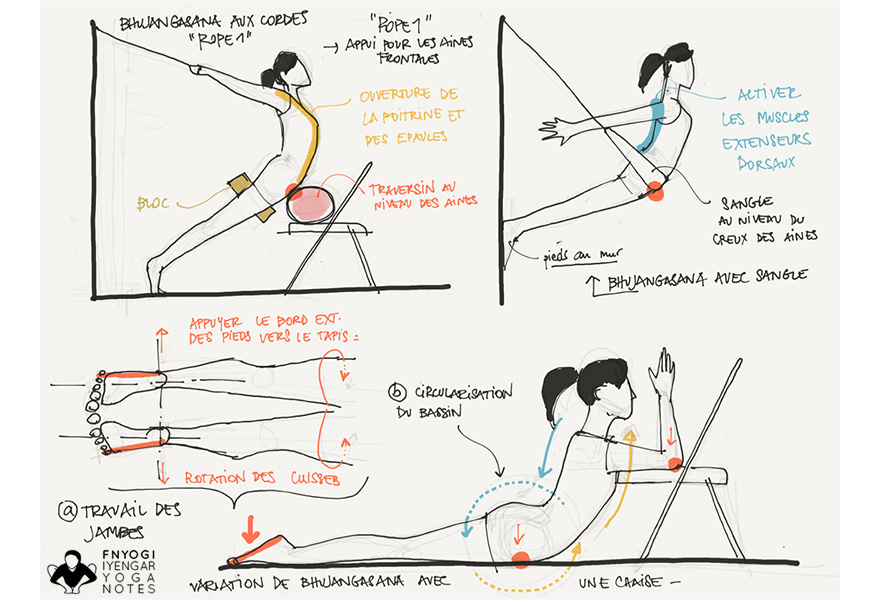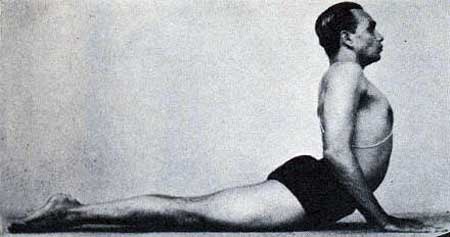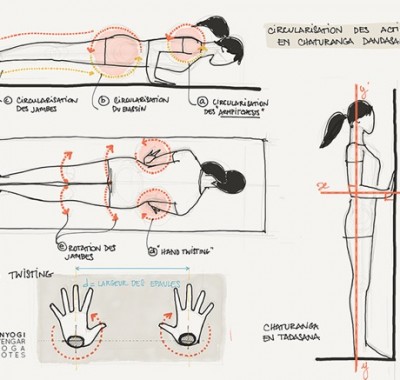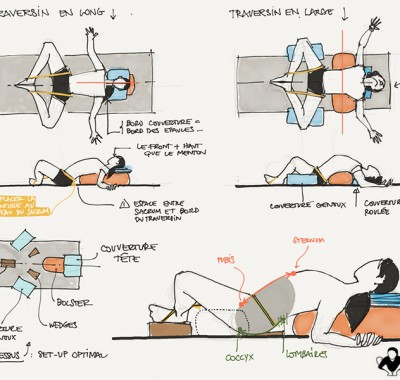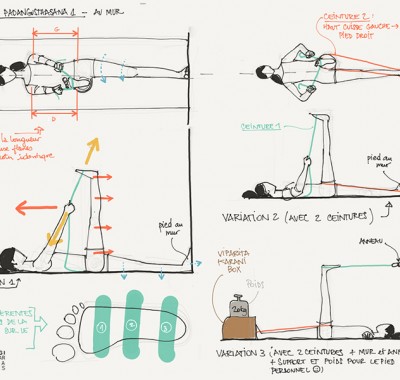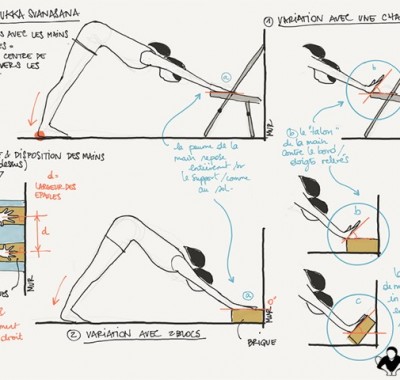There you go : here are two variations of back-bendings which will raise your mood. And this is one of my favorite: Bhujangasana.
Bhujangasana is translated as “posture of the cobra”, and it does not seem to me necessary to explain why when one observes a picture of this posture.
What I like about this posture is the stretching of all the front of the trunk from the pubic bone anchored to the ground. In this article I would like to evoke a particular variation of Bhujangasana realized with the help of a chair. I like this variation because it helped me understand the important actions to achieve in this posture.Bhujangasana is the little sister of Urdhva Mukka Svanasana (the dog head up) it is besides a very good preparation of the groins for the latter and for all the back bending postures in general.
1 – Bhujangasana as an exercise of preparation.
First of all, let us see two exercises of opening of the groin in order to prepare backward flexions. These two exercises are done on the wall, and they are also two variations of Bhujangasana.
The first exercise is also called “Rope # 1″ in Iyengar Yoga (where the use of a support for the groin is not compulsary). In both cases represented on the upper sketches – the groins are supported:
In the first case (left drawing) by a bolster placed on a chair,
In the second (right-hand drawing) the strap is placed at the level of the hollow of the groins. Pressing gives information to the muscle and allows it to relax so that it opens up more. The first sub-variation makes it possible to open the frontal groins and the chest (almost) passively, since one “hangs” from the strings.
The second variation opens the groins and strongly urges the extensor muscles of the back to lift the unsupported chest.
2 – Bhujangasana with chair
(or how to understand the circular legs to torso movements)
What is remarkable in this asana is that the legs are completely on the ground which produces a large surface of grounding as there are few or none in other back flexions. Here we learn the ABC of the legs, trunk and the pelvis work in the back bendings, a work that will be all the easier to understand that the important points have a grounded support.
What are the actions which help provide space to the lumbars ?
a. You need to work on your feet and legs:
The small toe will be pressed more closely towards the carpet (if you choose to hold your feet together you will leave the big toes in contact). This has the effect of moving the heels outwards and this pressure combined with the activation of the thigh muscles supporting the internal rotation initiated by the correct work of the feet has the effect of giving space to the buttock bones and thus to the lumbar (QED).
b. Through the work of the pelvis (Tadasana effect).
Here, as in Tadasana, the pelvic girdle makes a circular motion, the pubis and the outer hips press the ground while the tail bone descends.
Conclusion:
It is therefore the kiss-cool double effect that gives space to the lumbars and avoids the evil back pain, particularly highlighted in this variation of Bhujangasana, and which in general allows us to fully understand the crucial role of the legs and the pelvis in the back bendings.
You can find Fanny also on her own blog Iyengar yoga notes – http://www.iyengaryoganotes.com

